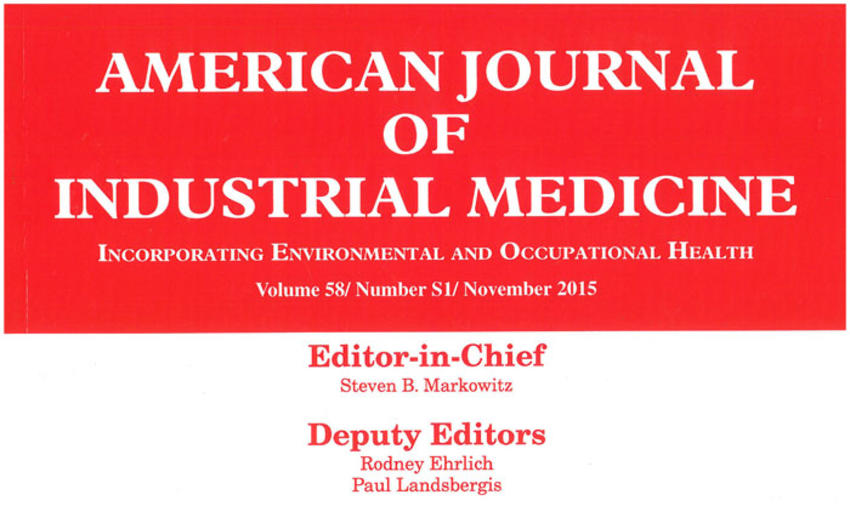AJIM special issue on silicosis
AJIM special issue on silicosis

 American Journal of Industrial Medecine
American Journal of Industrial Medecine
We are very pleased to announce the new publication of From silicosis to silica hazards: an experiment in medicine, history and the social sciences, edited by Paul-André Rosental (Sciences Po), Paul Blanc (UCSF) and David Rosner (Columbia University).
Special issue of American Journal of Industrial Medicine, 58, S1
In 1995 the International Labour Organisation (ILO) and World Health Organisation launched a campaign to eliminate silicosis, based on the notion that the knowledge and means required for its elimination were within our reach. Despite this vision, silicosis is still very much with us, whether in the epidemic form identified in the Chinese or in the South African mining industry, in less visible epidemic form in a multitude of small operations in India or in outbreaks in novel settings. At the political level, current efforts in the US to reduce the risk of silicosis and other silica related diseases have been stalled by representatives of corporate interests.
The persistence of this ancient hazard and the complex relationship between silica and silicosis and other diseases associated with them, is reflected in ongoing research interest in the subject. A perusal of published English literature reveals an increased number of mechanistic studies exploring inflammatory pathways and genetic markers, continuing interest in complications such as lung cancer and autoimmune disease, and a plethora of silicosis case studies and industry surveys particularly from developing countries. A parallel history literature makes clear that how a society defines and compensates silicosis, and occupational disease more generally, is as much socially determined as biomedically defined.
This conjunction of social and scientific processes makes silicosis a rich seam for interdisciplinary research. To this end, researchers associated with the Centre l'Etudes Européennes at Sciences Po, have chosen to shine a light on the international conference held in Johannesburg in 1930. The conference was to be highly influential in securing international expert agreement on the nosology and etiology of silicosis, and paved the way for inclusion of silicosis in an ILO convention on compensation for occupational diseases four years later. But it also closed medical research avenues, which are currently reopening, 85 years later.
To tackle these issues, this special issue suggests at least three levels of exploration. It combines:
- institutional history—the illumination of conflicting aims and agendas of the participants and organizing entities of the 1930 conference;
- history of medical or scientific ideas—in this case, the lasting influence of decisions made at the conference on biomedical conceptualization of silica and silicosis, specifically, the authors argue, a narrowing influence which remains with us today.
- a third level which is perhaps the most ambitious. This involves adopting, as it were, a counterfactual position to the one that emerged from the conference, and refocusing, through epidemiological and laboratory investigation using modern techniques, on silica as an agent with etiological effects across a wider spectrum of pulmonary and systemic disease than the one “truncated” in 1930.









